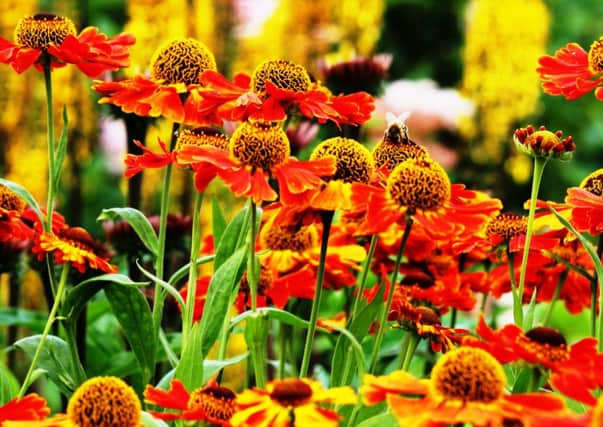Plan ahead for colour


But that doesn’t mean to say that gardeners can’t dream – or do something to make next year even more colourful than the summer of 2014. By dividing big clumps of perennials, you can triple your late summer flower power in one season.
Many plants such as such as argyranthemum, rudbeckia, gaillardia, helenium and echinacea, come up every year and produce masses of daisy-shaped blooms – with rudbeckia and coreopsis coming in yellow and orange tints while their close family relative, echinacea, tend to be more to the rose and purple end of the spectrum.
Advertisement
Hide AdAdvertisement
Hide AdSo to increase your stock, simply dig up the clump and then split it into sections. Use the fresher growth from around the edge of the clump, discarding the central mass which is usually old and worn out, and dumping it in the compost bin.
And as most perennials will have finished flowering now (although many will retain their seed heads, which are much appreciated by hungry birds), cut down the stems to tidy up the bed(s) and add the old stems to the growing pile of compostable waste.
While you out and about, and before the winter winds get a chance to play rough with tall rose bushes, it’s worth cutting back taller stems by about a third to reduce the wind rock that can loosen roots and reduce plant vigour.
Finally, this is the ideal time for planting out tulip bulbs, giving them sufficient time to produce a good root system while the soil is still warm, and enough time for the internal flower buds to grow out of the bulb next spring.
Advertisement
Hide AdAdvertisement
Hide AdMake sure they go into well-drained, fertile soil or else grow them in containers where you can control the quality of the compost.
The diversity of tulips means that it’s possible create displays from March until May or even June.
Whatever you choose, make sure you try some of the species tulips, such as praetans and saxitalis, which are the earliest to bloom. They have short stems and are best suited to rockeries or the front of flower borders, but they wake up early spring with an explosion of colour.